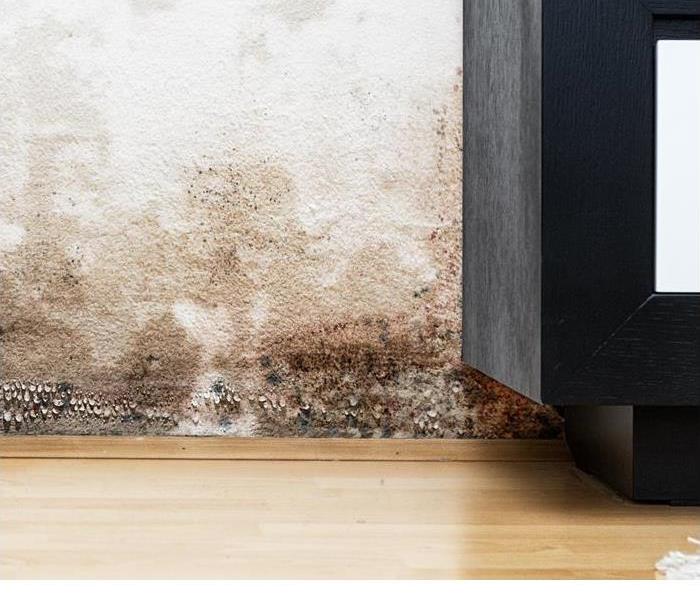3 Differences Between Mold and Mildew
3/26/2018 (Permalink)
While there can be many types of fungi in Universal City, CA there is one thing they all likely have in common: you want to get rid of them. The steps you should take depend on whether your home has mold or mildew. In order to know whether you are at risk for mold damage or simply have less harmful mildew, there are some questions to ask.
1. What Does the Fungus Look Like?
Mildew tends to be gray or white and very flat. Mold on the other hand comes in a number of colors, including blue, green, or black. Mold tends to be fuzzy or slimy.
2. Where Does It Grow?
Mildew growth is more common than that of mold. It tends to be found on produce, houseplants, and natural fabrics. Mold growth, on the other hand, tends to be more invasive. It is found in many places including showers, drywall, wood, air conditioning systems, wallpaper, and ceilings. The wide array of areas it inhabits is one reason mold damage quickly becomes extensive if unaddressed.
3. How Stubborn Is It To Remove?
Mildew, because of its flat texture, can usually be removed with a household cleaning solution and a scrub brush. Mold tends to have tiny filaments that infiltrate whatever surface it is on, making it much harder to remove. Do-it-yourself cleaning is usually not the best idea with mold, because you can release mold spores into the air and spread the issue to other areas of the home. For mold, it is often helpful to call a professional to determine the extent of damage and best method for remediation.
Mold damage tends to be more severe than that of mildew. That is why it is often important to determine which type of fungus is the problem. After you have determined what type of fungus has intruded, you can take the right steps to banish it and restore a healthy environment to your home.
Visit http://www.SERVPROnorthhollywood.com for more information on mold.






 24/7 Emergency Service
24/7 Emergency Service
